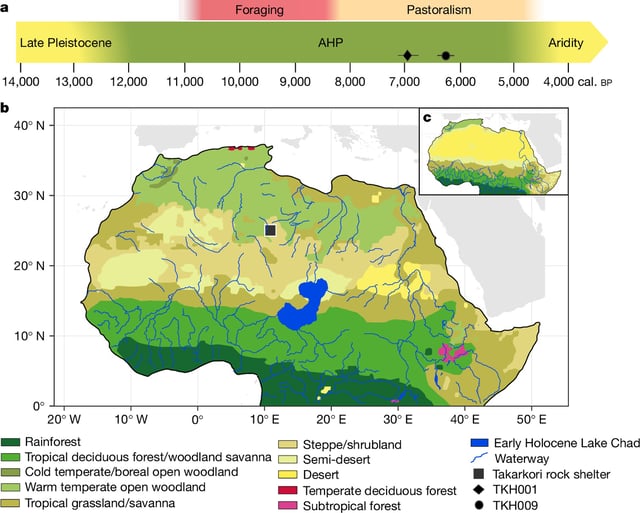Overview
- Researchers sequenced the genomes of two 7,000-year-old mummies from Libya's Takarkori rock shelter, identifying a previously unknown North African lineage.
- This lineage diverged from sub-Saharan populations around 50,000 years ago and remained genetically isolated for tens of thousands of years.
- The findings challenge assumptions that the Green Sahara served as a migration corridor, showing limited gene flow between North and sub-Saharan Africa during the African Humid Period.
- The spread of pastoralism in the region likely occurred through cultural exchange rather than large-scale migrations, highlighting the role of knowledge sharing.
- Despite the lineage no longer existing in its pure form, it remains a significant genetic component of modern North African populations.



